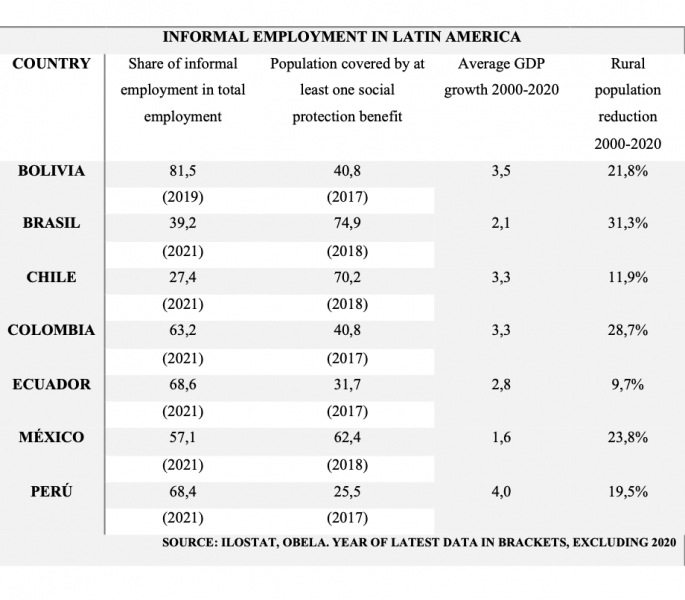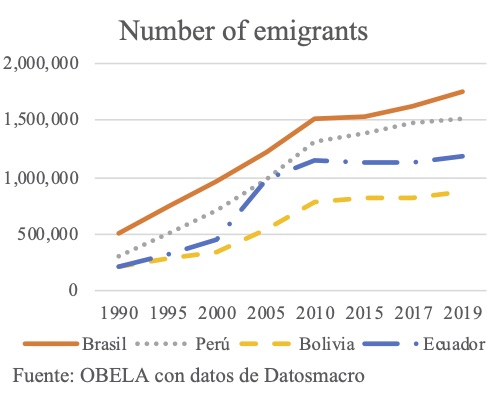Three neighbouring countries are going through a violent social conflict, and another one will be in the first half of 2022. Brazil because of elections considered fraudulent, Peru because of a presidential replacement considered fraudulent, and Bolivia because of the imprisonment of a Santa Cruz politician linked to the 2019 coup. He is a virulent opponent of the MAS government. Between 13 June and 30 June 2022, Ecuador protests convulsed the country, led by the indigenous movement and joined by civil society. Repression in Brazil and Bolivia has led to the arrest of hundreds of people. The riot police killed Seven people in Ecuador, leaving more than 500 injured, between uniformed personnel and civilians, and some 150 arrested. In Peru, 50 people have been killed in 37 days since 8 December 2022, and the repression continues. In all four countries, political polarisation is extreme and defined between "communist" and "anti-communist". Although anachronistic and from the Cold War, the terms still signify the panic of the ones against the others.
Some common economic elements of these countries are in the table below. The economic growth of two of them has been very high on average (Peru and Bolivia) and the other (Brazil and Ecuador) in the Latin American average. Most strikingly, growth reduced absolute poverty in all countries between 1997 and 2020. According to the World Bank, the lowest 20% received 4.1% national income in Ecuador, 4.7% in Bolivia, 4.5% in Brazil and 4.8% (2020) in Peru. Growth reduced poverty; however, the lowest 20% remain penniless. The third and fourth quintiles did very well, and the top 20% suffered a loss. The wealthiest 20% lost their share of national income and received 52.3% of national income in Ecuador, 49% in Bolivia, 54.7% in Brazil and 49.1% (2020) in Peru. It represents a reduction between 1999 and 2020 in the share of national income of about 10% of the top quintile in Ecuador, 15% of national income in Bolivia, 13% in Brazil and 10% in Peru, i.e. there is an improvement in income distribution in all, but the lowest 20% remain miserable in spite that GDP grew.

For young rural people, escaping poverty means migrating to the city; therefore, the rural population has reduced in all countries. Brazil has a vast internal migration mass, with over 31% of the rural population. Peru and Bolivia have less urban migration compared to the others, with around 20% reduction of rural people and Ecuador less, 9.7%. International migration is another way out of poverty. Another way out is through the illegal economy, drug trafficking, organized crime, etc.

The relatively high economic growth in these countries, above the Latin American average, has been unable to reduce informality levels or the mass of international migration. Brazil, which grew less, has less informality. The Informal sector is understood to include professional consultants, IT people, street vendors, and unregistered manufacturers. Economic growth is insufficient to absorb workers into the formal sector and give them at least some social protection. The country with the highest level of informality is Bolivia, with 81.5% of the population and 40% of the population having at least one social protection. Ecuador follows it with 68.6% and 31.7% with social protection; Peru with 68.4% of the people and only 25% with social protection. Finally, Brazil with 39% of informal workers, but on the contrary, 74.9% have social protection. It indicates that protests may arise in Ecuador, Bolivia and Peru from informal population masses that do not have social protection, but not in Brazil. What all four have in common is that the lowest 20% are destitute and have yet to improve their situation despite improvements in GDP. Economic growth raised the economic floor but kept 20% of citizens in all four countries, with only 5% of national income unchanged.
In sum, all four countries have above-average economic growth. Still, it is insufficient to absorb the labour force, generating internal and international migration and the development of the informal sector. The informal sector has no social protection. Governments made some efforts in Brazil and Bolivia to provide social protection to a portion of the population, but n Peru, it has yet to happen. There is a growing disparity in people's quality of life and their expectations of improvement. The poorest were stagnating and unprotected even though they were less needy in absolute terms than 20 years ago. To this must be added the new unemployment resulting from automation, where middle-class people jet into the informal sector in the absence of unemployment insurance and the generation of new jobs. The export-led economic model has not only driven down wages in all four countries but left these issues in its wake. Indonesia's reforms should be considered in terms of export complexities to help create jobs, a central concern of the economy, rather than concentrating on inflation and interest rates. Not only does the market not solve everything, but it partly manufactures the troubles observed in Ecuador, Bolivia, Brazil and Peru.
A remedy that does not solve the problem, but contains it, are income guarantee policies, such as those applied in Mexico. The Mexican government distributes transfers worth 1.9% of the GDP to 50 million people annually. The problems observed are an expression of the dysfunction of the export-led model with low wages and a reduction of the state in the economy. Raising wages, removing tariffs on capital goods and small tariffs on consumer products, putting in place universal social protection and sustaining tax pressures above 30% of GDP would be a step forward. Otherwise producing for export when the larger economies are closing down seems nonsense and the results so far are socially unsustainable.
Download / Español










